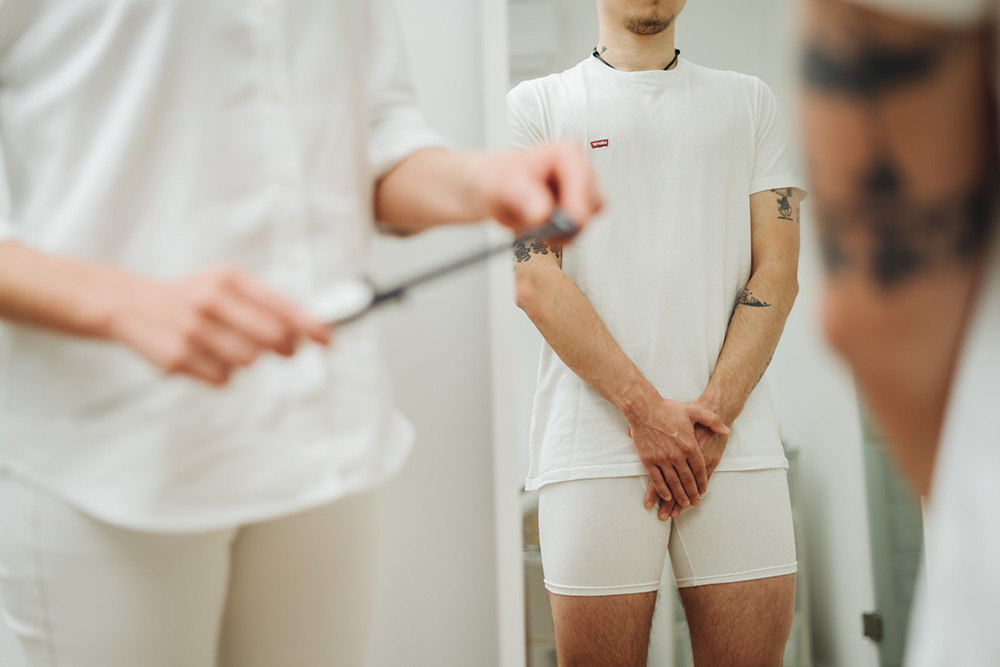Gender reassignment surgery in Munich – for satisfying identity and sexuality
Transsexuality: Male-to-female (MTF) and female-to-male (FTM) surgery
People who feel trapped in the body of the wrong sex can find a satisfying identity and sexuality through gender reassignment surgery (male-to-female or female-to-male).
Before a surgical procedure, there is always a detailed personal consultation in our practice. The various surgical options, surgical techniques and formal and legal requirements are discussed here. The focus is always on individual wishes and expectations, but also on the respective anatomical conditions.
Risks and complications are addressed openly and honestly so that an individual treatment plan can then be designed for each patient.
Often several surgical procedures are necessary, which are performed at fixed intervals one after the other. Throughout your entire treatment period, you will be cared for gently and sensitively by Dr Susanne Morath, Dr Hendrik Schöll and the entire team.
As a specialist practice for gender reassignment surgery, we can guarantee you competent treatment with a high level of safety thanks to our many years of experience.

Combined method – male-to-female procedure in Munich
For most patients (transwomen), the desire to have their genitals adjusted is the first priority.
The technique of penile invagination/penile inversion, which has been used most frequently since the mid-1950s, has become established over the years, but in our opinion it has some disadvantages. As a result, more than 10 years ago we developed the technique of the “Combined Method”, which has been used very successfully on a routine basis ever since. This technique can achieve an even better approximation of the genital area in terms of aesthetics and function.
The crucial difference to penile invagination is that, in addition to the penile skin, we also use the scrotal skin and the mucous membrane of the urethra to form the new vaginal cavity. This allows a reasonable vaginal depth to be achieved in most cases, regardless of the size of the genitalia.
Using the urethral mucous membrane can create a moist vaginal environment.
We also pay special attention to the formation of the external genitalia.
The inner leaf of the foreskin is left attached to the glans with vessels and nerves, and the clitoris, the clitoral hood and the labia minora are formed from it. The remaining penile skin is used to form the vaginal entrance.
Apart from the large corpora cavernosa and the testicles, no tissue is removed. During the entire operation, the nerves of the penis skin, clitoris, foreskin and urethra are microscopically dissected and protected. This is the only way to create optimal sensitivity for the entire genital region and vagina.
The mons pubis remains scar-free, with only delicate scars visible on the labia majora, but these fade over time after the operation.
In addition to the operation, aftercare is extremely important for an optimal result. In order to be able to use the constructed vagina optimally and to prevent shrinkage due to scarring, all our patients receive detailed and intensive instruction in how to bougie the neovagina after the operation.
Only when this is possible without any problems will you be discharged from the hospital. The average inpatient stay is a good 2 weeks. Even after your inpatient stay, the team led by Dr Morath and Dr Schöll is available to you at any time with help and advice – 24 hours a day / 365 days a year.
Often a second minor procedure is necessary to improve the result functionally and aesthetically. This can be done 6 months after the first procedure at the earliest. As part of this operation, further feminising procedures can be performed on the body, such as reduction of the larynx, breast reconstruction with implants or fat tissue transplantation (lipofilling) as well as feminising procedures on the face. We take a lot of time beforehand to inform you about all the possibilities and to be able to respond to individual wishes.
Our other services:

Masculinising procedures – female-to-male procedure in Munich
When it comes to gender reassignment surgery for masculinisation, the desire for a quick breast removal is often at the top of the list. A man’s everyday life is extremely difficult, especially with large breasts, so we have to act quickly and without lengthy procedures. This is possible because we offer mastectomies as outpatient procedures, meaning we can avoid long waiting times here.
We carry out all further steps for genital reassignment on an inpatient basis at the Munich Red Cross Clinic, diagonally opposite the practice.
After the ovaries and the uterus are removed by gynaecologists, we remove the vagina and carry our clitoral penis formation or penis construction, depending on the individual wishes. Several operations are necessary for this. All details will be explained in a detailed conversation.
Regarding penis construction, we offer construction with tissue from the forearm or from the thigh, including the construction of a urethra (urethral preformation).
Subsequent steps to improve the functional and aesthetic result are then possible: Glansplasty, shaping of a scrotum with implantation of testicular prostheses, implantation of a penile prosthesis.
These complex and difficult operations require many and intensive discussions. We take a lot of time to consider individual wishes and goals.
Our other services:
Do you have any questions about our practice or our services?
Just give us a call or contact us by email; we will be happy to help you.

